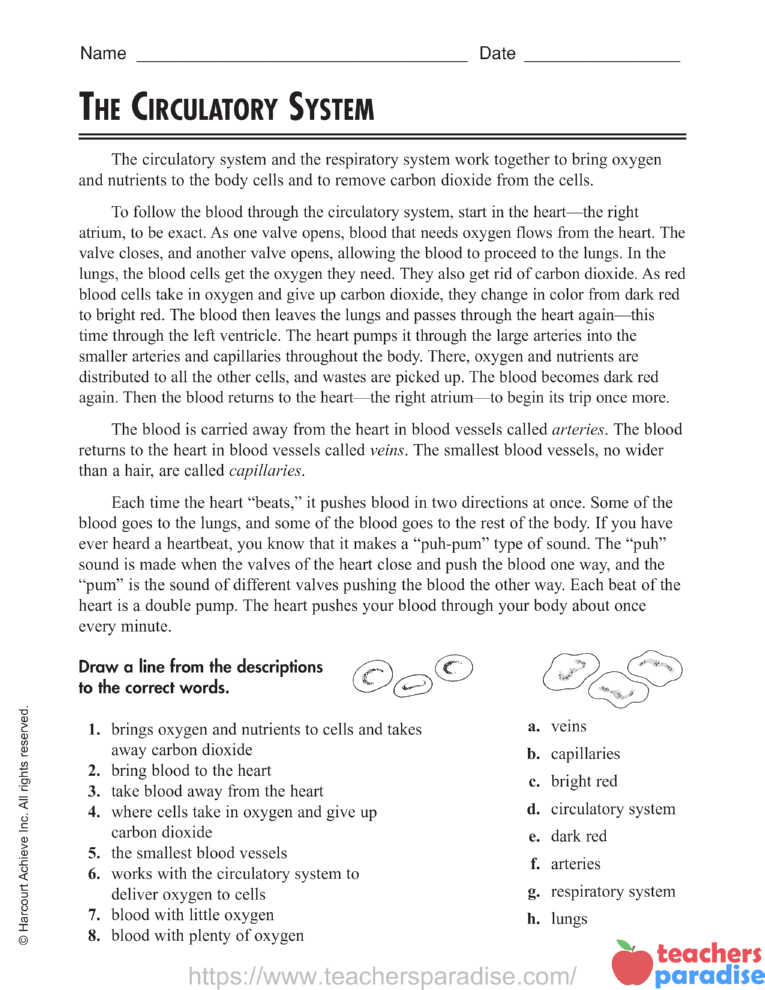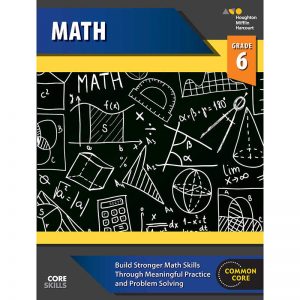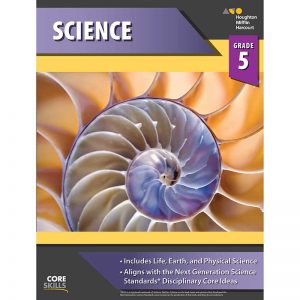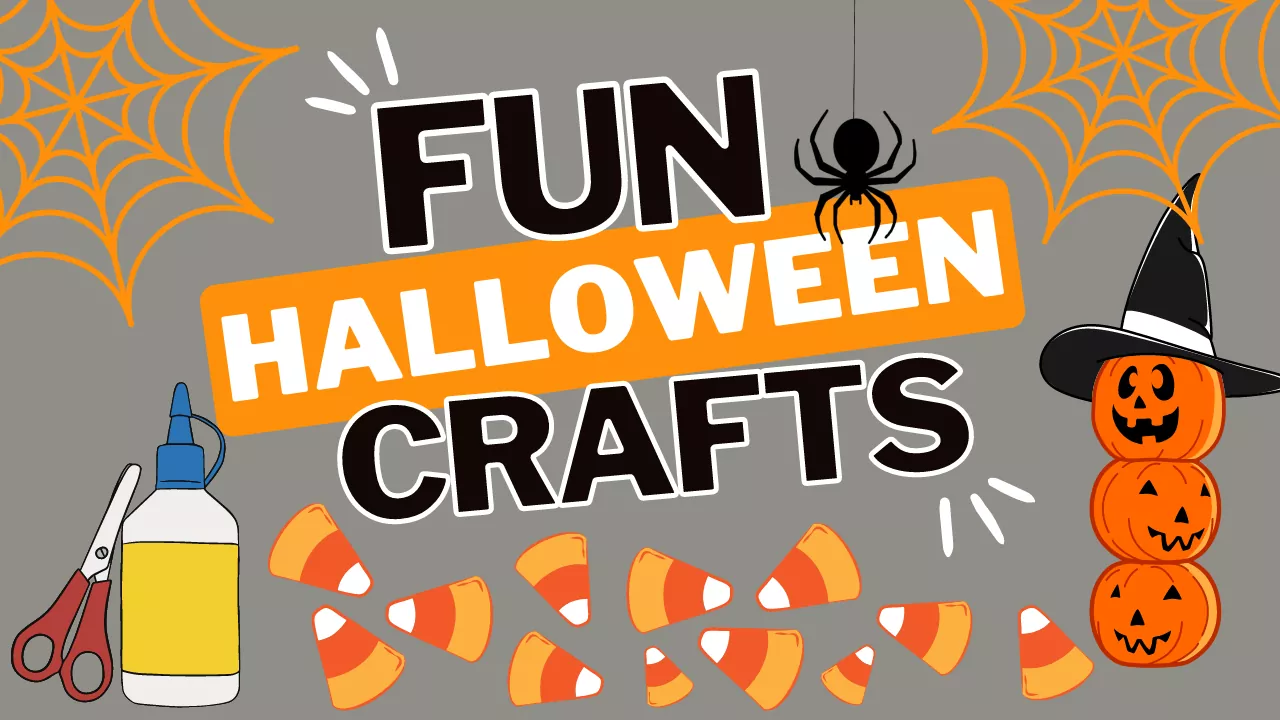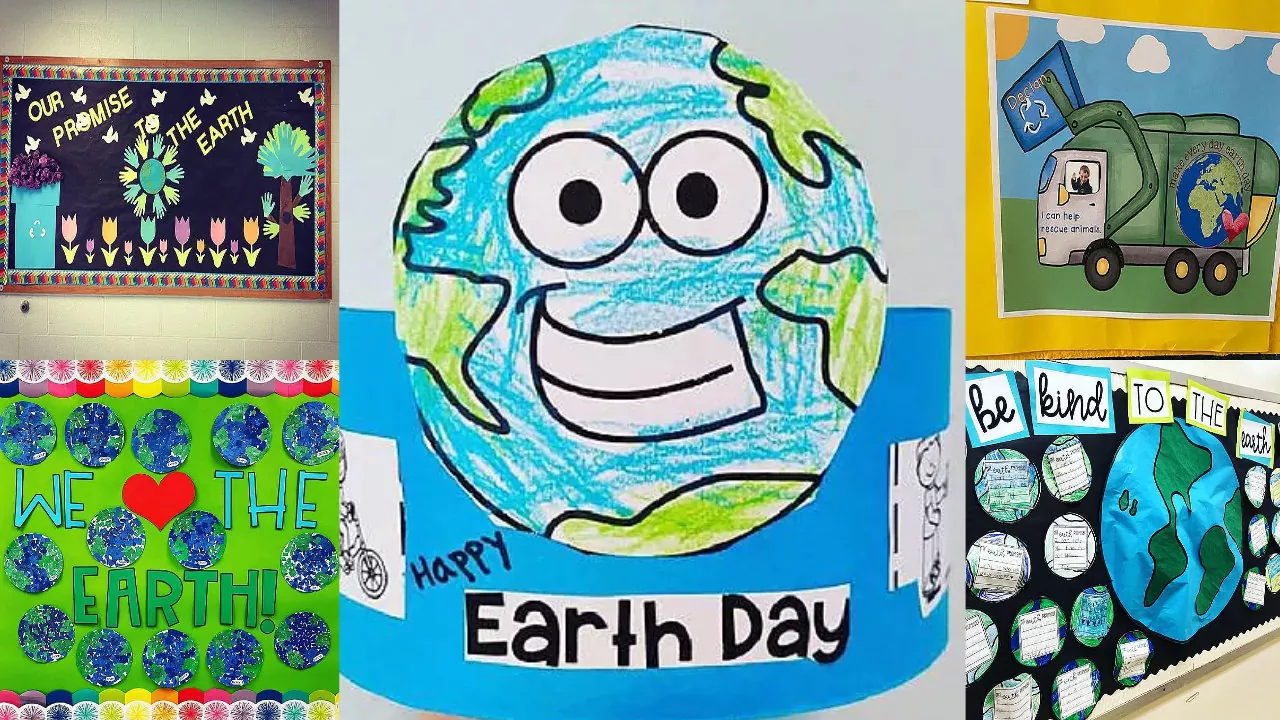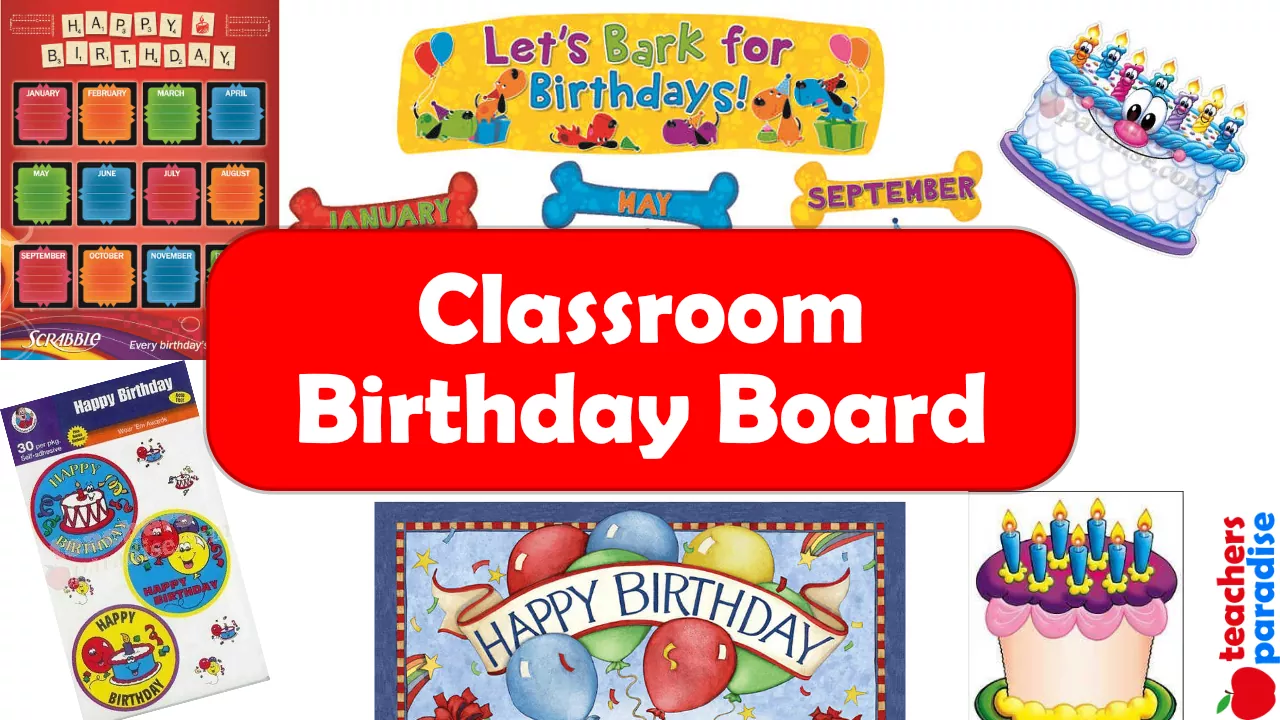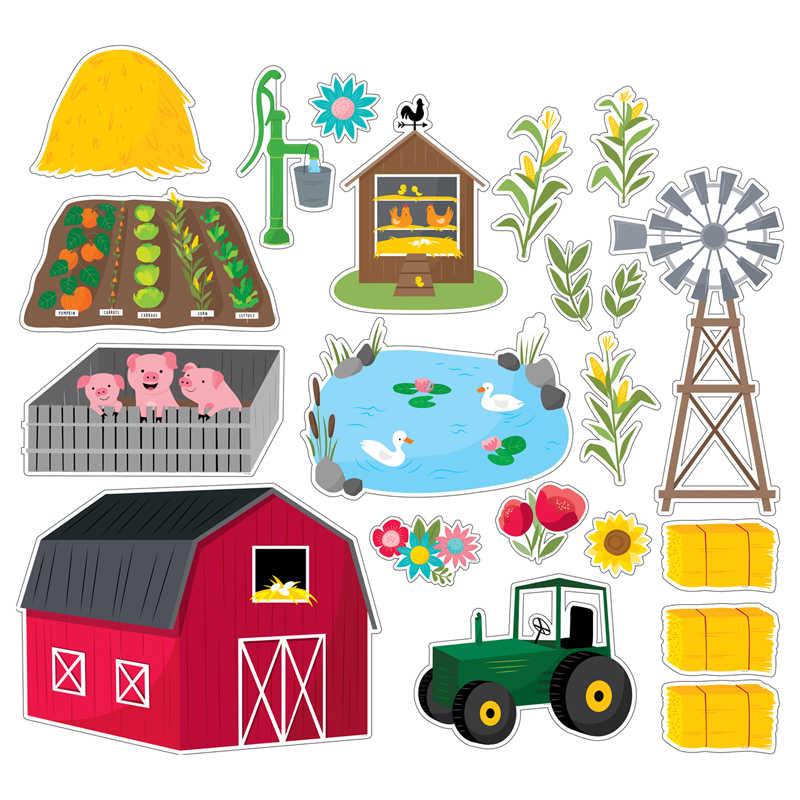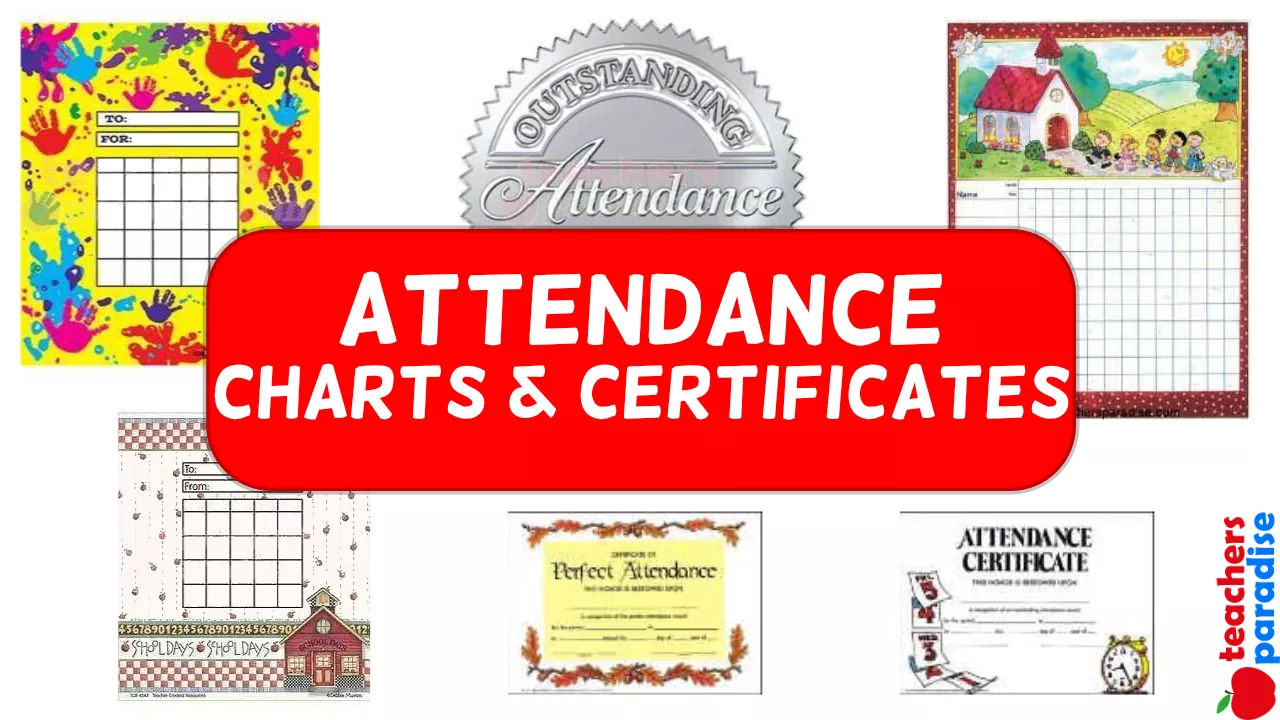The Circulatory System Worksheet
The circulatory system and the respiratory system work together to bring oxygen and nutrients to the body cells and to remove carbon dioxide from the cells.
To follow the blood through the circulatory system, start in the heart—the right atrium, to be exact. As one valve opens, blood that needs oxygen flows from the heart. The valve closes, and another valve opens, allowing the blood to proceed to the lungs. In the lungs, the blood cells get the oxygen they need. They also get rid of carbon dioxide. As red blood cells take in oxygen and give up carbon dioxide, they change in color from dark red to bright red. The blood then leaves the lungs and passes through the heart again—this time through the left ventricle. The heart pumps it through the large arteries into the smaller arteries and capillaries throughout the body. There, oxygen and nutrients are distributed to all the other cells, and wastes are picked up. The blood becomes dark red again. Then the blood returns to the heart—the right atrium—to begin its trip once more.
The blood is carried away from the heart in blood vessels called arteries. The blood returns to the heart in blood vessels called veins. The smallest blood vessels, no wider than a hair, are called capillaries.
WORKSHEET & Sample PDF Activity
[adinserter block=”2″]
Sample PDF Activity
[adinserter block=”3″]
Each time the heart “beats,” it pushes blood in two directions at once. Some of the blood goes to the lungs, and some of the blood goes to the rest of the body. If you have ever heard a heartbeat, you know that it makes a “puh-pum” type of sound. The “puh” sound is made when the valves of the heart close and push the blood one way, and the “pum” is the sound of different valves pushing the blood the other way. Each beat of the heart is a double pump. The heart pushes your blood through your body about once every minute.
Draw a line from the descriptions to the correct words.
Answer Key – The Circulatory System
Answer Key
- d
- a
- f
- h
- b
- g
- e
- c
